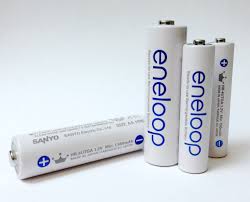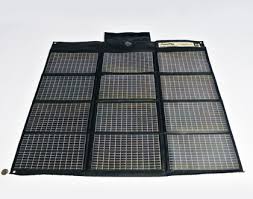Power Trip
One Approach to Emergency Communications
You can make hundreds of long distance QSOs using nothing more
than a few AA batteries. Add a simple 5-watt solar panel, and you
can operate indefinitely.
After participating in the club Field Day, I came home and had my
own
Field Day. I conducted a simple experiment to see how well I could
make Field Day contacts with a handful of AA batteries. I made 60
QSOs in about an hour and a half and hardly put a dent in the
stored
capacity of 8 Sanyo Eneloops.

The formula for long operating times from small batteries is simple.
1) Use a power-miser QRP rig
2) Use proven, high capacity, easy-to-charge batteries
3) Consider a solar panel
For my experiment I used the Mountain Topper transceiver from LNRPrecision.
This little pocket-sized transceiver draws only 35 ma on receive.
(An Icom 706
draws 50 times that.) When transmitting, it draws 500 ma. During my
experiment
I worked California, Arizona, New Mexico and Washington state among
others.
I was running about 3 watts. This is a CW rig that operates on 40,
30 and 20 meters.
You can get QRP rigs for voice too. They're a little more expensive,
a
little heavier and draw a bit more current.

My Field Day setup
I'm using Eneloop AA batteries for a several reasons. They have a
long shelf life.
They don't self discharge like most NiMh batteries. AA batteries are
available
almost anywhere if you need some in an emergency. They're forgiving.
I
solar charge them with no controller.
These batteries are typically rated at 2000 mAh. Even if you
discharge them
to half their capacity, they would run the Mountain Topper on
receive for
28 hours.

I use a five-watt folding solar panel rated for 12V to charge 8
Eneloop
batteries. The 8 batteries in series are rated for 9.6 volts, but
typically they
charge to about 11.5V. When they get to 9.8 or so, I recharge them.
A couple of hours with the 12V solar panel will completely charge a
discharged battery pack. I check the voltage to make sure I don't
overcharge them. Use a controller if you're not able to check them
periodically.
Emergency communications requires freedom from commercial power,
freedom from generators (no gasoline available), portability and
flexibility. With the Mountain Topper and 8 AA batteries, I have a
complete emergency station (including antenna) in a 4 X 6 inch box.
It weighs about a pound and a half.


